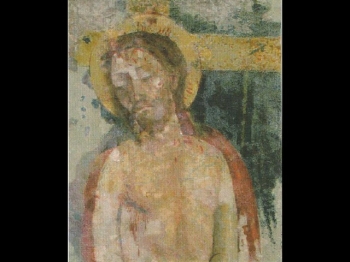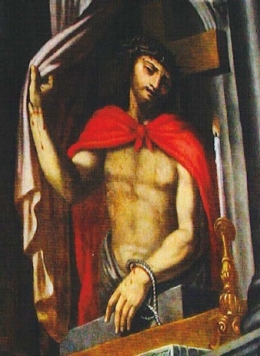Meditating on the Cross before the Most Holy Crucifix of Piety

This September 14, the Grand Master of the Order of the Holy Sepulchre, Cardinal Fernando Filoni, is in Galatone in the province of Lecce to preside over the solemn opening of celebrations to mark the 400th anniversary of the Miracle of the Most Holy Crucifix of Piety housed there. This sacred icon of Jesus (pictured) dating back to the XV century represents the mystery of the Passion, Death and Resurrection of the Lord according to one of the dearest representations in Eastern theology. In 1621 the image was covered by a veil that removed it from the direct view of the faithful and preserved the image which is considered miraculous. Before the eyes of various witnesses on 2 July almost 400 years ago, the veil lifted revealing the hands of the Lord, no longer bound, which appeared to remove the veil.
On this feast day for the Knights and Dames of the Order in which the Church invites us to meditate on the Exaltation of the Holy Cross, so close to our spirituality, we share some excerpts from the homily delivered by Cardinal Filoni on the theme of the cross.
"Reflecting on the mystery of our Redemption, the expression “the Most Holy Crucifix of Piety” may at first appear singular. In truth, in this context the word “Pietas, or Piety” does not refer to a 'pious' sentiment, nor does it evoke the emotionality towards a 'poor suffering man'. It is St. Paul who, before offering us an admirable synthesis of his Christology ("He appeared in the flesh, was vindicated by the Spirit, was seen by angels, was preached among the nations, was believed on in the world, was taken up in glory", 1 Tim 3:16), says that it is our profound duty "to confess that great is the mystery of piety (pietas),” that is, of God's affection and 'passionate' love for us, a love that offers itself to humanity, a love that transforms and opens.
The Icon of the Crucifix that we venerate presents Jesus with a purple mantle on his shoulders; a cross can be glimpsed behind him, while he is in the middle of a sepulchre with his face slightly reclined, conveying a sensation of peace.
The purple mantle was the symbol of the power and dominion of kings. Christ’s shoulders, in truth, do not bear the greatness of imperial power, but the profound mystery of suffering, of a being humiliated and derided by his tormentors, by a Roman Procurator and by leaders of the people who incited the crowd. Jesus’ mantle is one of service, of his martyrdom to which the Church is also called in the likeness of her Lord, it is a mantle of the tribulations of the faithful and of the persecutions in so many of her members down through the centuries.




